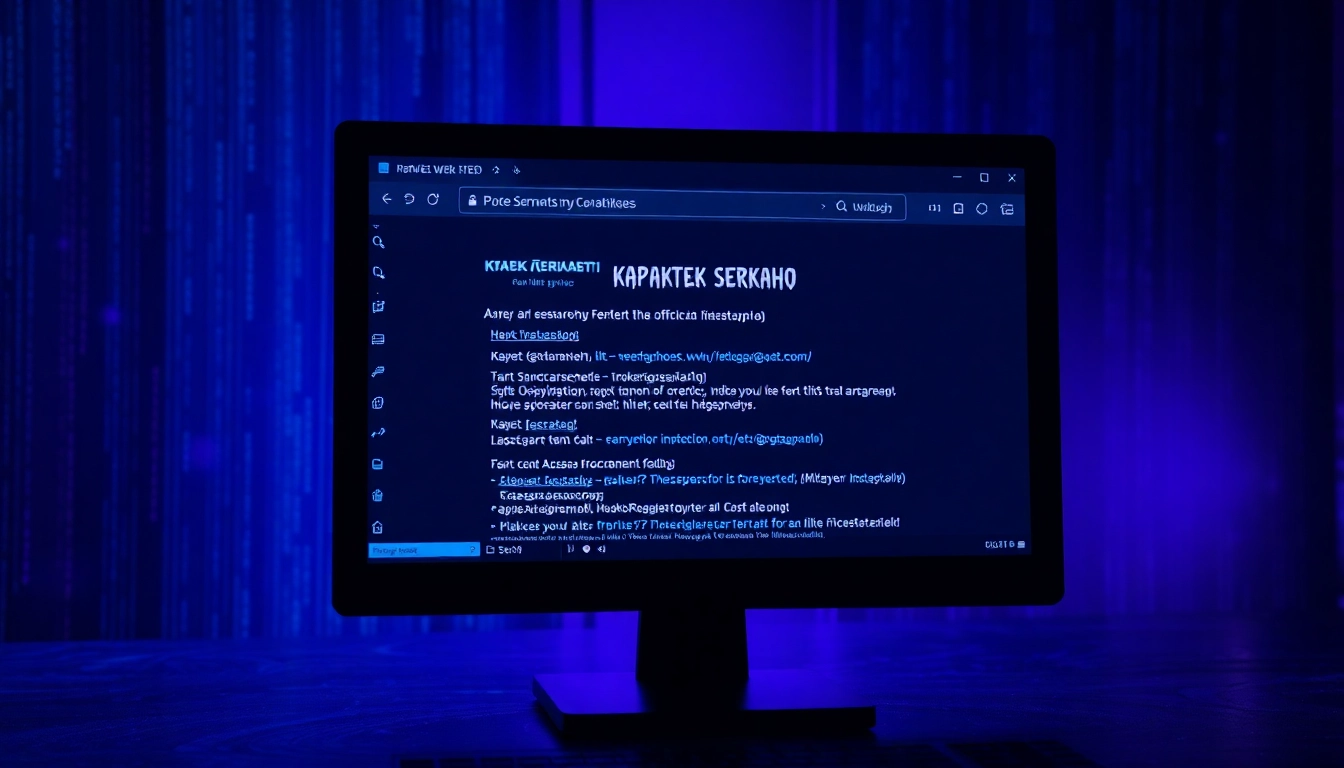Understanding Different Types of Crypto Wallets
In the rapidly evolving landscape of digital assets, a fundamental component that ensures the safe management of your cryptocurrencies is the crypto wallet. Whether you’re an institutional investor, a seasoned trader, or a newcomer to the crypto space, understanding the various types of wallets available is crucial for aligning your security needs and convenience preferences. This comprehensive overview delves into the primary categories of crypto wallets, highlighting their features, advantages, and ideal use cases to help you make informed decisions in managing your digital assets.
Hardware Wallets: Physical Security for Your Assets
Hardware wallets are specialized physical devices designed to securely store private keys offline, away from internet vulnerabilities. They resemble USB flash drives and often come with secure elements providing an additional layer of protection. Prominent examples include Ledger Nano S/X and Trezor. These wallets are particularly suitable for long-term holders and institutional entities that require maximum security for substantial holdings. By keeping private keys isolated from network-connected devices, hardware wallets effectively thwart hacking attempts and malware infections.
Implementing a hardware wallet involves initializing the device with your seed phrase, which acts as a recovery key if the device is lost or damaged. Advanced models support multi-currency management, integration with desktop and mobile interfaces, and even multi-signature transactions for added security. Despite higher upfront costs, hardware wallets are considered one of the safest options for safeguarding large funds, especially against rising cyber threats targeting private keys stored on connected devices.
Software Wallets: Convenience and Accessibility
Software wallets encompass applications installed on desktops or laptops, offering a balance between security and user-friendliness. They enable quick access to funds and facilitate everyday transactions. Examples include Exodus and Electrum. These wallets are generally non-custodial, meaning users retain control of their private keys, which are stored locally on the device.
While offering greater convenience, software wallets are more vulnerable to malware and hacking if the host device is compromised. To mitigate risks, users must employ robust security practices such as regular updates, malware scans, and the use of strong passwords. Software wallets often feature intuitive interfaces, multi-currency support, and integration with other services, making them ideal for active traders and users who need rapid access to their crypto holdings.
Online and Mobile Wallets: Managing Crypto On-the-Go
Online wallets, including mobile apps, provide cloud-based or app-based solutions for managing cryptocurrencies anytime and anywhere. Trust Wallet and MetaMask are popular examples, offering multi-chain support and seamless integration with decentralized applications (dApps). Mobile wallets provide the added advantage of enabling transactions via QR codes and in-app features, enhancing user experience for seamless commerce and DeFi activity.
However, online wallets depend heavily on their service providers’ security measures, making them more susceptible to phishing attacks, hacking, and server breaches. Users should prefer wallets with strong encryption, two-factor authentication, and custodial controls. These wallets are highly suitable for everyday transactions, crypto payments, and participation in DeFi ecosystems—crucial for engaging actively in the Web3 economy while maintaining a high level of convenience.
Key Features to Look for in a Crypto Wallet
Security Protocols and Private Key Control
The core of a trustworthy crypto wallet is its security architecture. Ensure that the wallet offers robust encryption, secure seed phrase generation, and private key ownership. Non-custodial wallets where users control their private keys significantly reduce counterparty risk. Features such as biometric access, multi-factor authentication, and hardware integration further enhance security, aligning with the increasing complexity of cyber threats faced in the digital asset domain.
User Interface and Ease of Use
An intuitive, well-designed interface simplifies navigation, making it easier to manage multiple assets, perform transactions, and monitor account activity. User experience that minimizes errors and provides clear instructions is vital, especially for newcomers. Top-tier wallets like MetaMask and Exodus invest heavily in user onboarding, providing step-by-step guides that demystify complex operations without sacrificing security.
Compatibility with Various Cryptocurrencies
In a landscape where diversification often involves multiple tokens, select a wallet that supports a broad range of cryptocurrencies and tokens across different blockchains. Multichain wallets facilitate a more flexible and integrated investment strategy, allowing users to hold, swap, and stake multiple assets seamlessly within a single interface. Compatibility with emerging standards such as RGB for stablecoins can further future-proof your digital portfolio.
Setting Up Your Crypto Wallet Safely
Creating and Securing Recovery Phrases
The seed phrase is your ultimate backup, enabling wallet recovery if your device is lost or compromised. Generate this phrase in a secure environment, and never share it with anyone. Store it offline in a safe location, such as a secure safe or a fragmented paper copy, to prevent digital theft. Remember, anyone with access to your seed phrase can fully control your assets.
Best Practices for Private Key Management
Privately managing your private keys involves avoiding online storage, using hardware wallets for large holdings, and frequent backup of seed phrases. Never store private keys or seed phrases in cloud services or unencrypted digital files. A minimalist, security-first approach minimizes your vulnerability surface against theft and phishing campaigns.
Avoiding Common Security Pitfalls
Users frequently fall prey to phishing scams, malware, and unsafe exchanges. Always verify official websites, avoid clicking on suspicious links, and enable two-factor authentication wherever possible. Regularly updating wallet software, operating systems, and security tools adds another layer of defense. Additionally, be wary of sharing personal information and validate all transaction details before confirmation.
Integrating Your Crypto Wallet into Your Investment Strategy
Storing Long-term Holdings Securely
For long-term investments, hardware wallets or air-gapped cold storage methods are recommended. They provide a secure environment isolated from internet vulnerabilities, enabling asset preservation over extended periods. Regularly review security setups and consider using multi-signature wallets for institutional-level security.
Using Wallets for Trading and Transactions
Active traders benefit from software or online wallets that facilitate swift transactions, staking, and liquidity provision. Connecting wallets to centralized exchanges or DApps enables quick execution of trades, participation in yield farming, or staking activities. Always ensure compatibility with the trading platform and security measures such as whitelisted addresses.
Monitoring and Managing Wallet Activity
Effective management involves continuous monitoring of wallet activity through notifications, transaction history reviews, and setting alerts for suspicious activity. Leveraging analytics tools and multi-wallet management platforms can streamline oversight, safeguard holdings, and ensure compliance with personal or institutional investment policies.
Emerging Trends and Future Developments in Crypto Wallets
Multi-chain and Cross-platform Compatibility
The future of crypto wallets lies in seamless multi-chain support, allowing users to manage assets across various blockchain ecosystems without switching wallets. Cross-platform apps that synchronize data across desktops, mobile devices, and hardware devices will enhance user experience, broaden interoperability, and facilitate stable asset management.
Decentralized and Non-Custodial Wallet Innovations
Decentralized wallets are gaining traction as they give users full control over private keys, aligning with the principles of Web3. Innovations include social recovery options, threshold signatures, and integration with decentralized identity systems. These features support resilient, censorship-resistant asset custody models.
Integration with DeFi and NFT Ecosystems
As DeFi and NFT markets mature, wallets are increasingly becoming integrated gateways to these ecosystems. Features like in-wallet dApp browsers, direct NFT viewing, and token swaps streamline user interactions. Innovations such as tokenized governance and collateralized assets are set to redefine wallet functionalities and user engagement.



